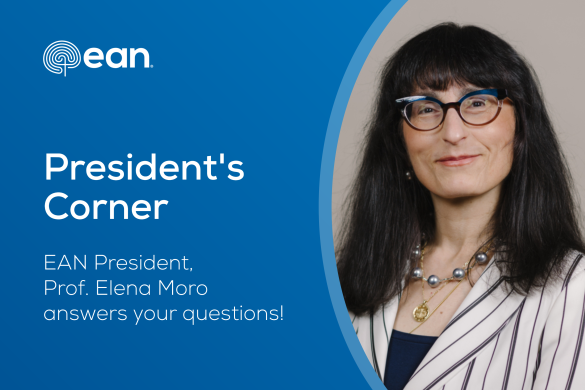by Katina Aleksovska, methodologist of the EAN Guideline Production Group
The Guidelines International Network or GIN was established in 2022 with the mission to support collaboration and facilitate continuous learning, discussion, and improvement of the process of production of guidelines and their implementation. They currently have around 350 individual and organisational members from 61 countries. To enhance its networking role, the GIN organises conferences once a year, in different parts of the world, to reach the broadest audience possible.
The EAN is a part of its structure, as an organisational member, and takes part in discussions, activities, and courses to enrich its own knowledge in guideline development. In addition, the EAN contributes to the GIN library, a platform for guidelines published and in development around the globe. This year we participated in the conference that was held in Toronto on 21-24 September.
The EAN Guideline production group (GPG) was represented by one of the co-chairs, Professor Joao Costa, and Katina Aleksovska, a GPG member and guideline methodologist.
The topic of the conference this year was ‘Making health choices transparent, equitable and efficient: strengthening global guideline quality, technology, collaboration and adaptation’. Apart from the five plenary sessions, various workshops and symposia, there were working group meetings where any participant was invited to join, discuss focused topics and get involved in the future projects of the network.
The main topics at the conference were the following:
– Equity in guidelines
– Efficiency in guideline development and guideline adaptation
– Visualization of information and recommendations
– Guidelines without borders: developing recommendations to guide care globally
– Choice or decision: transparency
During recent years, a lot of effort has been made to develop a solid methodology for summarising the evidence used in guideline production and developing a transparent and standardised way of presenting the results and recommendations of guidelines. This led to improvement in the quality and trustworthiness of clinical practice guidelines globally. However, for the guidelines to lead to even better health benefits, special attention should be paid to the process of guideline implementation and the inclusion of diverse populations’ perspectives into guideline development.
A lot of discussions were had about the inclusion of stakeholders that provide various perspectives, so that guidelines apply to diverse populations in terms of gender, ethnicity, age, and socioeconomic status; guideline adaptation and efficient use of already existing systematic reviews; the experience and issues with living guidelines; transparent linking between the evidence and recommendations and guideline implementation; and presenting key information to all stakeholders.
The EAN recognises the importance of the production of guidelines with high-quality international standards, and the topic of implementation, which was covered to a large extent at the conference, overlaps with one of the next priorities of the GPG, which is to launch implementation projects of the EAN guidelines within the EAN community.
The participation of the GPG in the conference was a perfect opportunity for its members to share ideas and experiences with colleagues and receive valuable input that will be implemented in future EAN guidelines.














